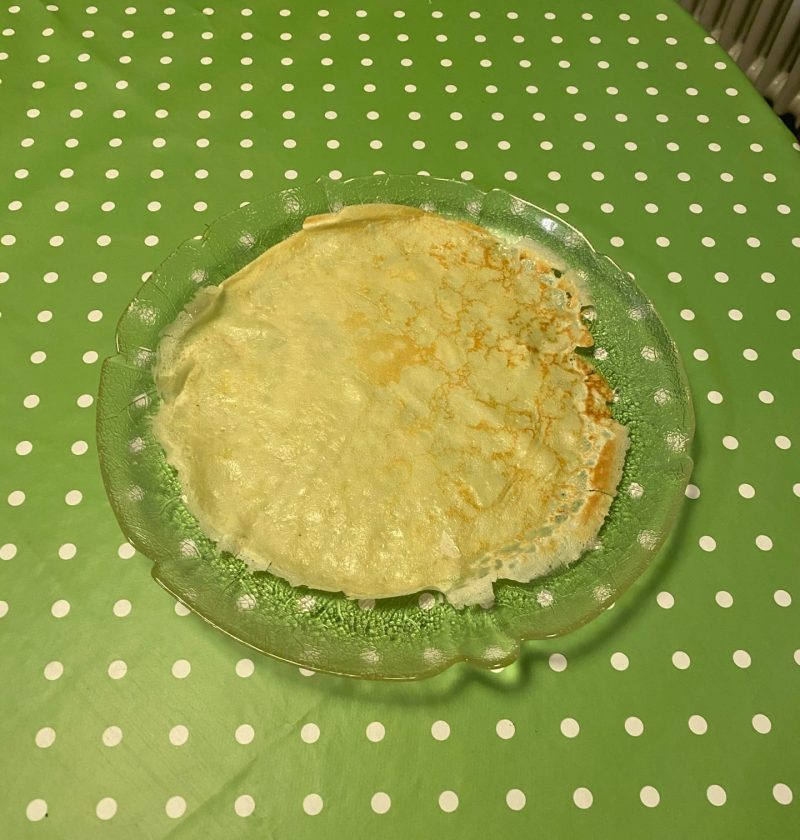
In this post we are going to talk about such a simple, but still very diverse thing as crepes. People say that they originated from France(Festa, 2019), but in this case it is hard to figure out the exact location. They are consumed all over the world in many different ways, people eat them with caviar, Nutella, salmon, they eat them hot, cold, rolled, flat and in many other different ways. However behind all of that hides a very short and at first glance simple recipe.
Let’s get dipper into it, first we are going to cook the crepes using our basic recipe(Guyette, 2020) and than talk about it.
(Continuation and reference list are in the notes for this post)
Ingredients
Instructions
-
Measure 1 cup of all-purpose flour and create a well out of it in a mixing bowl
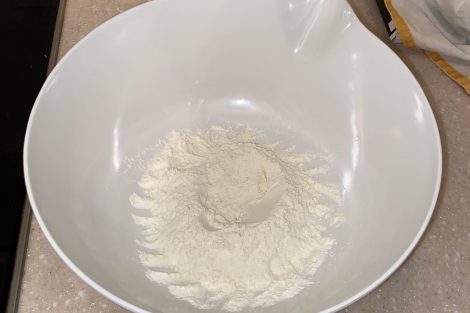
-
Add into the well 2 large eggs, while slowly wisking them in
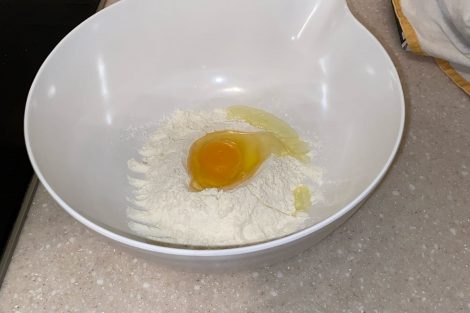
-
Add 1 tbsp. of granulated sugar and 1/4 tsp. of kosher salt, mix that in
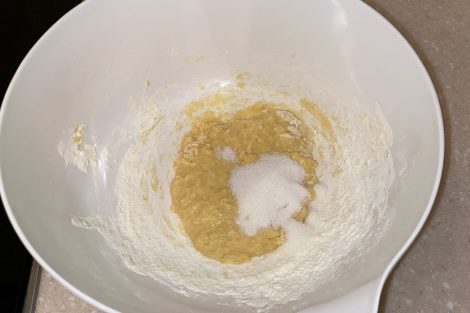
-
Measure 1 1/2 cups of milk, gradually pour it into the bowl, whisking to combine
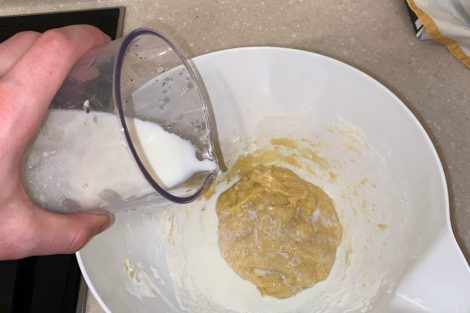
-
Let sit at the room tempreture for about 15-20 minutes, until you can see bubbles forming on top
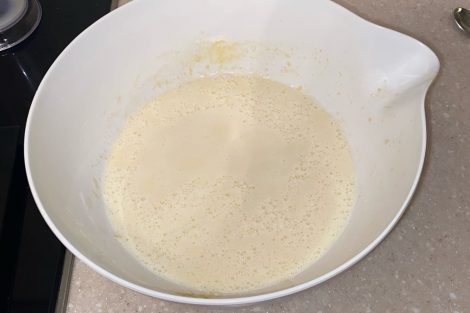
-
Heat your skillet on medium heat and melt some butter on it
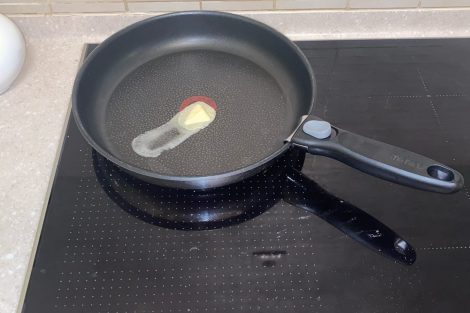
-
Pour about 1/4 of a cup of your batter onto your skillet and swirl it around, so the batter covers all spots. Cook for 2 minutes
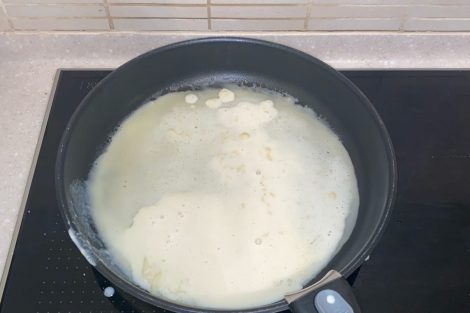
-
After cooking for 2 minutes gently flip the crepe (might be hard to do, I suggest using a big flat spatula for that) and cook for 1 more minute
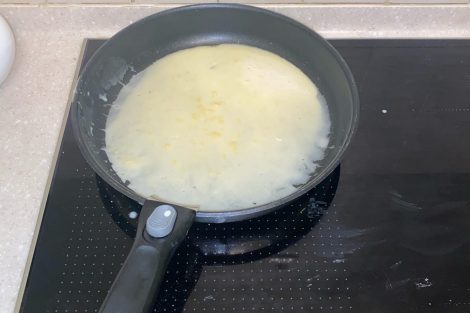
-
Take the crepe of your skillet, and here is your product. Repeat the cooking process around 4-5 times using the remaining batter
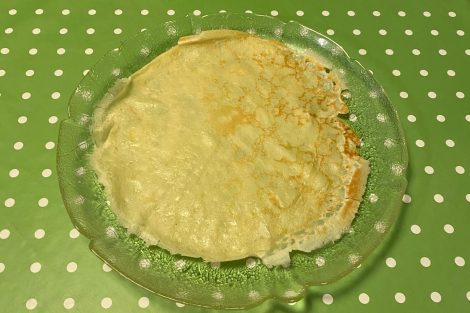
Notes
Using this recipe I got 6 crepes. They turned out kind of sweet, so I would suggest eating them with something like strawberry jam, I ate them with sweet condensed milk and that was great.
Now let's talk about the science side of our recipe.
Flour is the main ingredient of our crepes. As you know flour is also used in most of existing baking recipes and the role it plays is to build structure of whatever you are making. When hydrated, proteins in flour start to produce gluten and that gluten creates the elastic network of our baked goods, or crepes in our case. (Hoffman, 2018 April) That network is basically what makes our crepes chewy and lets them solidify on the skillet, if you would try making crepes without flour, you would probably end up with a weird liquid that would not form into anything no matter how long you will be trying to cook it. (Try it if you are really curious and than tell me what happened)
Milk is also a very important ingredient in a lot of recipes. When used with flour, it hydrates the flour proteins and also helps to produce gluten. Using water instead of milk, is not a very good choice, since milk does not just hydrate the flour proteins (which water call also do just fine), but the proteins in milk change the way gluten is produced. Again, if you would be to use water, your result would be sticky and it would have a different structure. (Corleone, 2019)
Eggs do a lot of different stuff at the same time. First of all, they of course hydrate our flour proteins. Second, the proteins in eggs add to the structure of our crepes, so they work alongside with gluten in order to form the structure of the final product. Third, they add to the flavor and color of our crepes, you can clearly taste them and this is why our crepes have a golden color. Fourth, they help to moisturize our crepes and make them soft when they are done, but that is once again, because there is water in them. (Hoffman, 2018 May)
Sugar adds to the browning process, so it caramelizes and that is what makes the brown spots on our crepes. Also, sugar of course makes out crepes taste sweet. (Sugar, 2019)
Such a small ingredient as salt is still rather important. Salt brings out the flavors of our crepes, so it helps to make them less plain. It also has an effect on the gluten formation, it helps to strengthen the structure of our crepes. (Salt, 2014)
Now, when we realized that all of our ingredients are very important, let's try to change one of them. I thought that it might be helpful for some people, if we look at the possibility of making out crepes gluten free, using rice flour.
It is pretty easy to substitute all-purpose wheat flour for rice flour, you have to follow these steps (Lowe, 2006):
- For each cup of wheat flour use 3/4 of a cup of rice flour.
- Double the amount of eggs the recipe calls for.
- Add 2 tsp. of xanthan gum for every cup of rice flour. (We have to use xanthan gum, when using rice flour, because it plays the role of gluten, which we do not get from the rice flour. So xanthan gum basically helps to build the structure of our product.) (Gruss, 2019)
I think that using this recipe will definitely change some properties of our crepes. The color will probably get lighter, because rice flour is white, and the taste will also be more like rice. Also, I think that the cooking time will increase, because we add more liquid, than intended.
Unfortunatly, I could not test this improvised recipe, and I could not find the exact reasons, why the first two changes work the way they do. However, I hope that in case you decide to try this out, it will work out well for you.
That is all for our crepes, I wish you a good cooking session!
Reference list:
Guyette, J. (2020, March 9). These Classic Crepes Will Impress Your Whole Family. Retrieved from https://www.delish.com/cooking/recipe-ideas/recipes/a52114/easy-basic-crepe-recipe/
Festa, J. (2019, May 24). A History Of The Crepe, France's Delectable Staple. Retrieved from https://epicureandculture.com/french-crepe/
Hoffman, K. (2018, April). Function of Flour in Baking, Differences in Varieties of Flour. Retrieved from https://bakerbettie.com/varieties-flour/
Corleone, J. (2019, December 30). What Does Milk Do in Baking? Retrieved from https://www.livestrong.com/article/547557-what-does-milk-do-in-baking/
Hoffman, K. (2018, May). All About Eggs and Their Function in Baking. Retrieved from https://bakerbettie.com/function-of-eggs-in-baking/
Sugar: Sucrose: Baking Ingredients. (2019, September 19). Retrieved from https://bakerpedia.com/ingredients/sugar/
Salt in bread baking: how much and why. (2014). Retrieved from https://www.weekendbakery.com/posts/salt-in-bread-baking-how-much-and-why/
Lowe, S. (2006). How to Replace Wheat Flour With Rice Flour. Retrieved from https://www.ehow.com/how_7773013_replace-wheat-flour-rice-flour.html
Gruss, T. (2019, October 02). How to Use Xanthan Gum and Guar Gum in Gluten-Free Cooking. Retrieved from https://www.thespruceeats.com/xanthan-and-guar-gluten-free-cooking-1451162